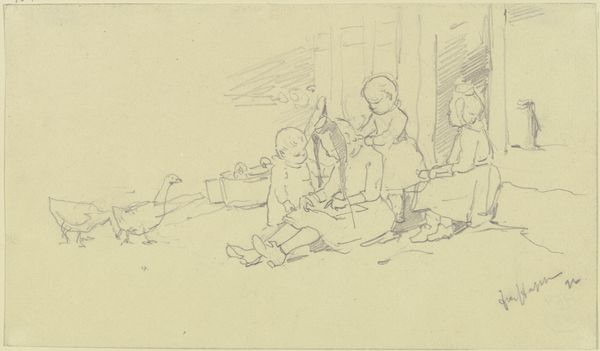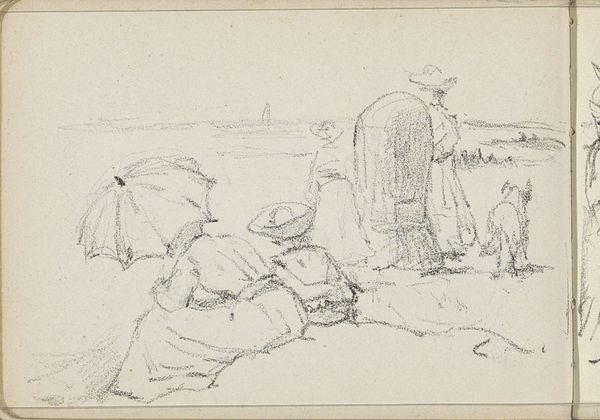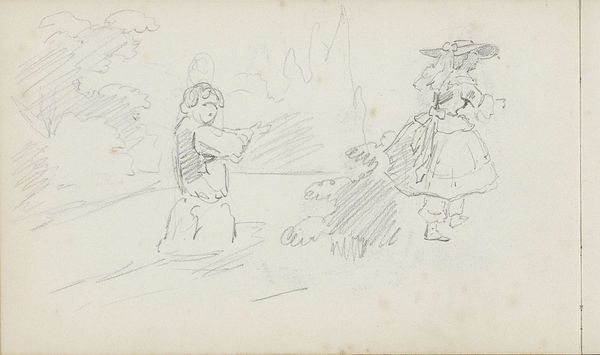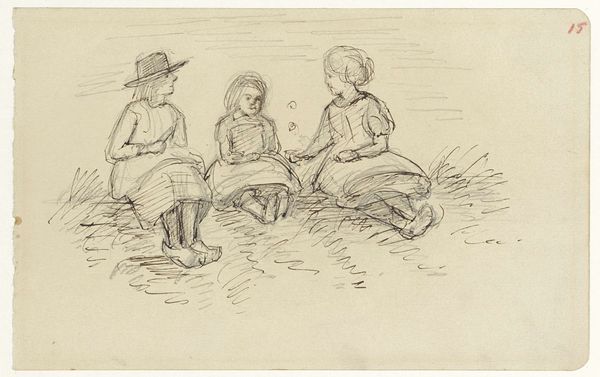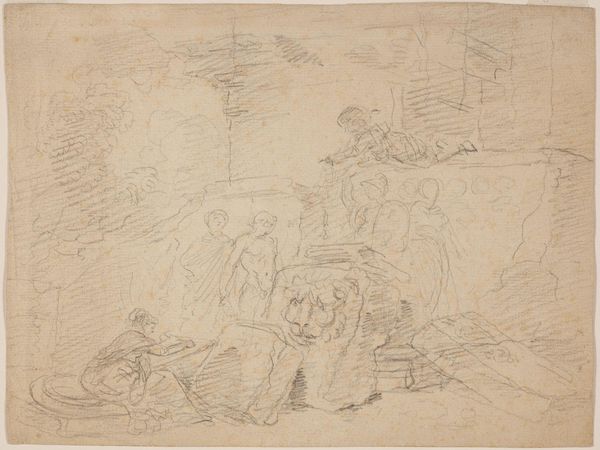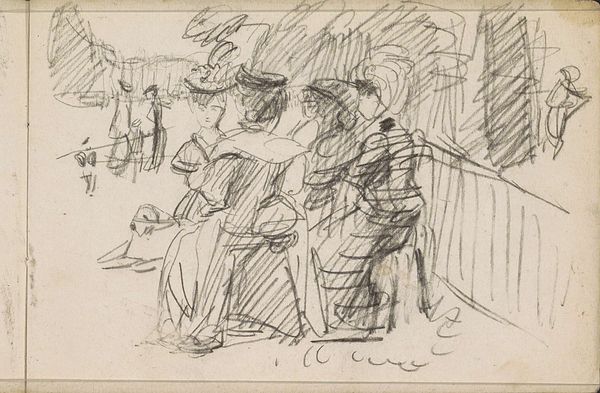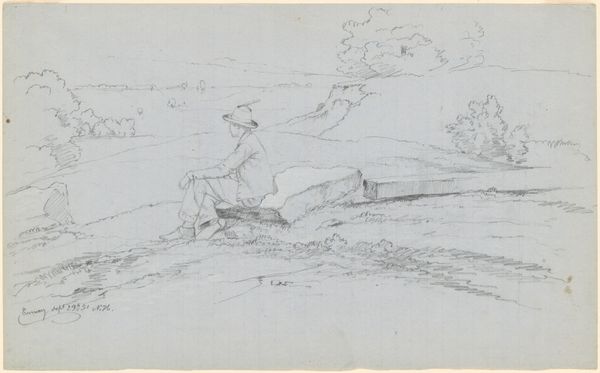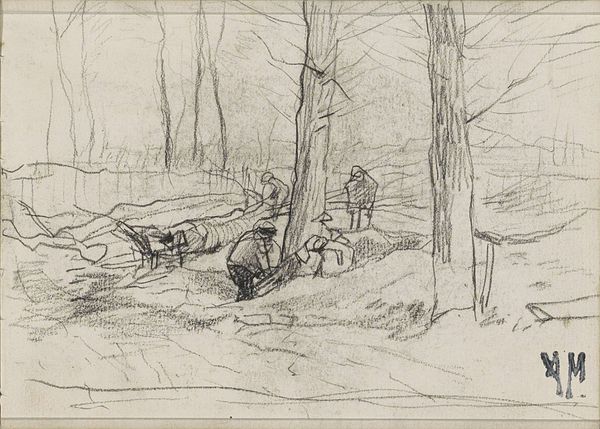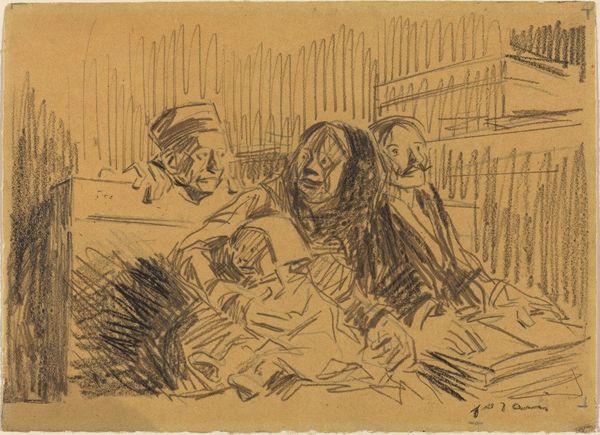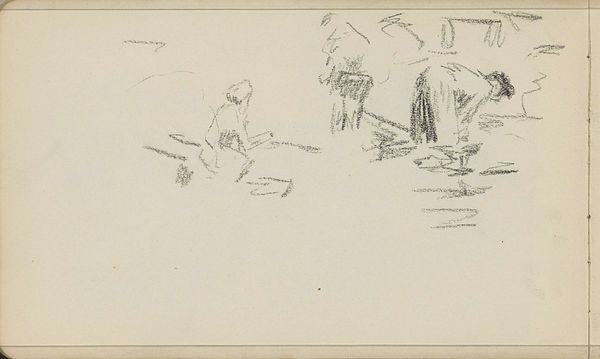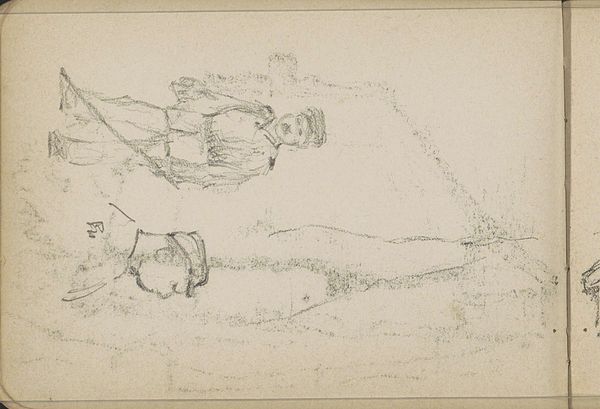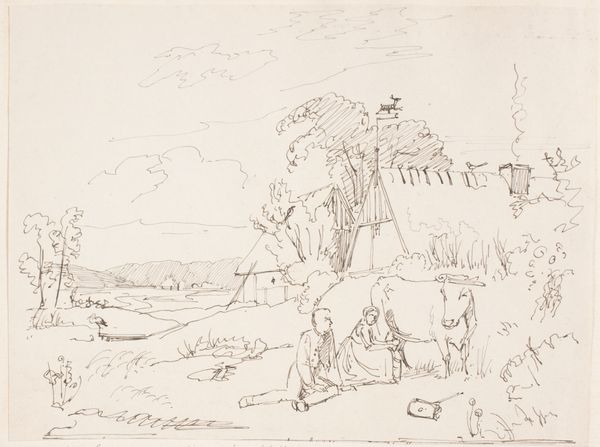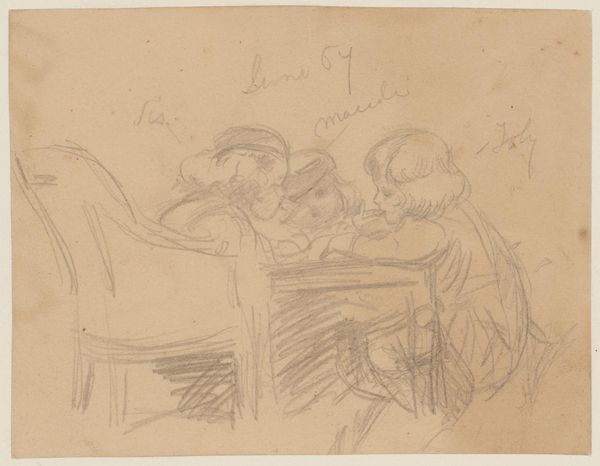
drawing, pencil
#
drawing
#
landscape
#
figuration
#
pencil
#
genre-painting
Copyright: Public Domain
Editor: So, here we have Jacob Happ's "Swinging Children," a pencil drawing held at the Städel Museum. It’s… quaint. The children are simply drawn, but there's a lovely sense of motion implied. What do you see in this piece? Curator: I see more than just a simple depiction of childhood play. Genre paintings like this became popular during a period of rising middle-class affluence. The image of children safely playing reflects societal values concerning family and childhood as a protected and innocent state. It served to reinforce ideas about proper domesticity and moral development within the context of the home and safe community spaces. Editor: That’s interesting, I hadn’t considered the societal implications. So, you are saying this is more than a candid sketch but almost an idealization? Curator: Precisely. Drawings and paintings of children weren’t simply records of life; they were actively shaping perceptions. Images like this could have influenced everything from child-rearing practices to urban planning of parks and other safe places for play. Think about how prevalent and important they are as they shaped society’s outlook on community. Where were these children living? What might their families’ economic situation have been? Editor: Good point. The simple landscape does suggest a degree of privilege, and it invites us to think who had access to those safe spaces. I hadn't appreciated how carefully such an apparently spontaneous image can actually be composed to influence social ideas! Curator: It highlights how art can be a tool for both reflecting and constructing societal norms. It gives a perspective of our past while allowing to improve our present. Editor: I will now see genre scenes like this through a completely different lens. Thanks for highlighting the connection between art, childhood and society.
Comments
No comments
Be the first to comment and join the conversation on the ultimate creative platform.
